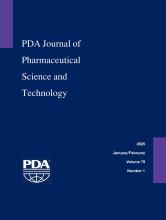Abstract
In order to operate profitably under different product demand scenarios, biopharmaceutical companies must design their facilities with mass output flexibility in mind. Traditional biologics manufacturing technologies pose operational challenges in this regard due to their high costs and slow equipment turnaround times, restricting the types of products and mass quantities that can be processed. Modern plant design, however, has facilitated the development of lean and efficient bioprocessing facilities through footprint reduction, and adoption of disposable and continuous manufacturing technologies. These development efforts have proven to be crucial in seeking to drastically reduce the high costs typically associated with the manufacturing of recombinant proteins. In this work, mathematical modeling is used to optimize annual production schedules for a single-product commercial facility operating with a continuous upstream and discrete batch downstream platform. Utilizing cell culture duration and volumetric productivity as process variables in the model, and annual plant throughput as the optimization objective, 3-D surface plots are created to understand the effect of process and facility design on expected mass output. The model shows that once a plant has been fully debottlenecked it is capable of processing well over a metric ton of product per year. Moreover, the analysis helped to uncover a major limiting constraint on plant performance, the stability of the neutralized viral inactivated pool, which may indicate that this should be a focus of attention during future process development efforts.
- Received June 14, 2016.
- Accepted December 2, 2016.
- Copyright © 2016, Parenteral Drug Association
PDA members receive access to all articles published in the current year and previous volume year. Institutional subscribers received access to all content. Log in below to receive access to this article if you are either of these.
If you are neither or you are a PDA member trying to access an article outside of your membership license, then you must purchase access to this article (below). If you do not have a username or password for JPST, you will be required to create an account prior to purchasing.
Full issue PDFs are for PDA members only.
Note to pda.org users
The PDA and PDA bookstore websites (www.pda.org and www.pda.org/bookstore) are separate websites from the PDA JPST website. When you first join PDA, your initial UserID and Password are sent to HighWirePress to create your PDA JPST account. Subsequent UserrID and Password changes required at the PDA websites will not pass on to PDA JPST and vice versa. If you forget your PDA JPST UserID and/or Password, you can request help to retrieve UserID and reset Password below.






